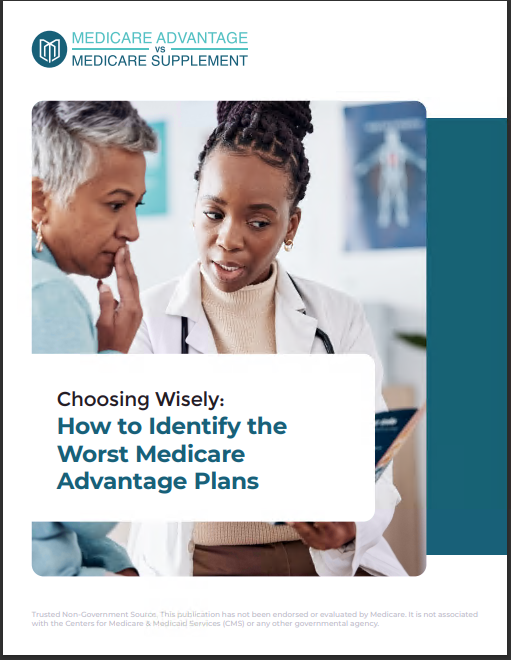Key Takeaways:
-
Medicare provides multiple tools to help you estimate, control, and plan for healthcare expenses during retirement, easing the uncertainty about future costs.
-
From understanding coverage options to leveraging preventive care and cost caps, Medicare supports your financial and physical health in retirement.
Start Strong with Understanding Medicare Coverage Options
Medicare isn’t a one-size-fits-all program, and figuring out which parts you need can go a long way toward managing your retirement healthcare costs. The program includes:
-
Part A: Covers hospital stays, skilled nursing facility care, hospice, and some home health services. Most people don’t pay premiums if they worked and paid Medicare taxes for at least 10 years.
-
Part B: Helps with outpatient care, doctor visits, preventive services, and medical equipment. This part comes with a monthly premium and an annual deductible.
-
Part D: Assists with prescription drug costs and varies by the plan you choose, including premiums, deductibles, and copayments.
By knowing how these parts work, you can select the combination that meets your needs and budget. Keep in mind that your choices at retirement can significantly affect your costs over time, so early planning is key.
Anticipate Out-of-Pocket Expenses
Medicare doesn’t cover 100% of your healthcare costs, so it’s important to budget for out-of-pocket expenses. Common costs include:
-
Premiums: Required for Parts B and D, and possibly Part A if you don’t meet the work requirements.
-
Deductibles and Coinsurance: These apply to most parts of Medicare and vary annually.
-
Copayments: These small fees add up, especially for frequent doctor visits or specialist care.
For 2025, the Medicare Part B deductible is $257, and the maximum deductible for Part D is $590. These figures give you a clear starting point to estimate how much you’ll need to cover additional costs.
Use Preventive Care to Stay Ahead of Costs
One of Medicare’s most valuable features is its focus on preventive care. Services like screenings, annual wellness visits, and vaccinations are often fully covered under Part B. These benefits help you:
-
Catch potential health issues early when treatment is less expensive.
-
Avoid more costly medical procedures down the road.
By prioritizing preventive care, you can maintain your health while managing your retirement budget.
Consider Medicare Supplement Plans to Limit Expenses
If you’re concerned about out-of-pocket costs, Medicare Supplement Insurance (also called Medigap) can help fill the gaps. While these plans come with an additional premium, they cover expenses like deductibles, coinsurance, and foreign travel emergencies.
Keep in mind that Medigap policies are only available to those enrolled in Original Medicare (Parts A and B). If you plan to explore this option, it’s best to enroll during your six-month Medigap Open Enrollment Period, which begins when you’re 65 and enrolled in Part B. Missing this window could result in higher costs or limited options.
Take Advantage of the $2,000 Out-of-Pocket Cap for Part D
Starting in 2025, Medicare Part D introduces a $2,000 annual cap on out-of-pocket prescription drug costs. This change provides much-needed financial relief, especially for those with chronic conditions requiring expensive medications.
Here’s how you can benefit:
-
Once you hit the $2,000 limit, Medicare covers 100% of additional drug costs for the year.
-
You’ll no longer need to worry about the “donut hole” coverage gap, which previously led to higher out-of-pocket expenses.
This cap simplifies budgeting for medications and ensures more predictable costs.
Explore High-Deductible Health Plans with HSAs Before Medicare
If you’re not yet eligible for Medicare, consider enrolling in a high-deductible health plan (HDHP) paired with a Health Savings Account (HSA). An HSA allows you to:
-
Save money tax-free for qualified medical expenses.
-
Carry over unused funds year to year with no expiration.
-
Use the savings to pay for Medicare premiums and other eligible costs once you’re enrolled.
For 2025, the HSA contribution limits are $4,300 for individuals and $8,550 for families. If you’re 55 or older, you can add an extra $1,000 annually. These savings can significantly ease your healthcare costs in retirement.
Use Tools to Estimate Your Costs
Planning for healthcare costs doesn’t have to feel overwhelming. Several tools and resources can help you estimate your expenses:
-
Medicare Plan Finders: These tools allow you to compare premiums, deductibles, and coverage options for Medicare Advantage and Part D plans.
-
Healthcare Cost Calculators: These estimate your total annual expenses based on your health needs and chosen Medicare plan.
-
State Health Insurance Assistance Programs (SHIPs): SHIPs offer free, personalized help to better understand Medicare and its costs.
By leveraging these tools, you can create a realistic budget for your healthcare needs during retirement.
Stay Informed on Annual Changes
Medicare isn’t static; premiums, deductibles, and coverage limits change yearly. Staying updated on these changes ensures you’re never caught off guard by unexpected expenses. Key dates to remember include:
-
Medicare Open Enrollment: Runs from October 15 to December 7 annually. Use this time to review and adjust your plan.
-
Annual Notices of Change: Arrive each fall and detail updates to your current plan.
Being proactive during these periods helps you adapt to changes and keep your healthcare costs under control.
Maximize Your Retirement Healthcare Strategy
By carefully planning and leveraging Medicare’s resources, you can take the guesswork out of retirement healthcare costs. Key steps include:
-
Reviewing your coverage options to ensure they meet your needs.
-
Taking advantage of preventive care and cost-saving programs.
-
Staying informed about changes in Medicare to avoid surprises.
Healthcare is a significant part of your retirement budget, but with the right strategy, you can navigate it confidently and affordably.
Ready to Take Charge of Your Healthcare Planning?
Now is the perfect time to align your Medicare decisions with your retirement goals. Stay proactive, use available tools, and make the most of Medicare’s benefits to secure your financial and physical well-being.









